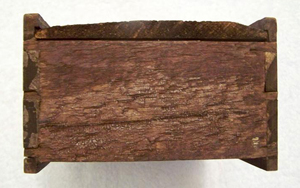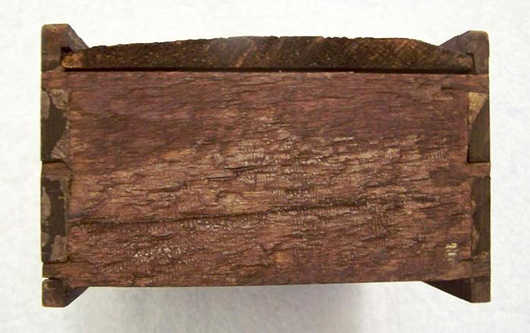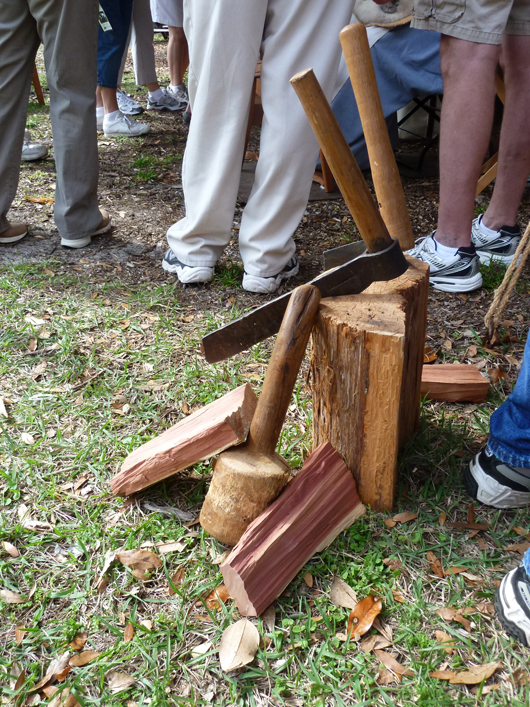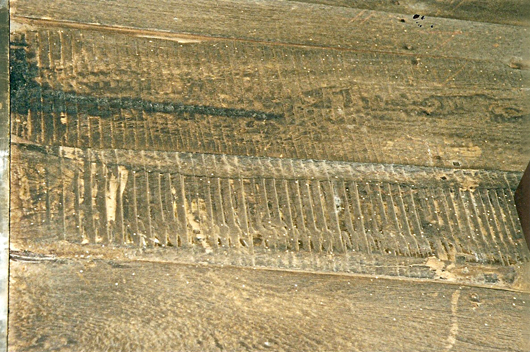
CRYSTAL RIVER, Fla. – On the rare occasion when I’m lucky enough to cross paths with a piece old furniture that I think may truly be an antique, I immediately conjure up images of the patriarchal craftsman in a dusty, dark shop, skillfully fitting a hand-cut tenon into the neatly squared off mortise in the rear stile of a walnut lowboy. Or maybe artfully executing a clutch of acanthus leaves on the knee of a Chippendale cabriole leg using a chisel he fashioned himself from a hardwood stick and a treasured piece of steel.
However, the pre-Industrial Revolution reality of 17th, 18th and early 19th century cabinetmaking was starkly different from my romantic reveries. Unlike most modern cabinetmakers, these old-timers could not run down to the craft center and pick up a nice piece of kiln-dried walnut, cut to order, sanded two sides and planed to specs. Period woodworking consisted of a lot of drudgery and hard work, all done with handtools that would seem primitive to us. But these tools and techniques, the hands that employed them and the early versions of powered tools, often leave us specific clues about the age and authenticity of an old piece.
Cabinetmakers of the Colonies and early America usually got their wood in large, rough cut hunks, harvested from a nearby source of the timber and shipped to the city as planks. Thus one of the primary facts of period cabinetmaking was that a great deal of time and energy in a shop was spent on two main tasks, cutting the wood to size and smoothing the surface. Both of these tasks were necessitated by how timber was originally converted to planks on its way from the forest to the cabinet shop. Since removing all the traces of earlier field dimensioning was both physically demanding and extremely time consuming, wherever possible this process was omitted. This concept is called “workmanlike manner,” a key ingredient in identifying period furniture. It means that the work was only as good as it had to be, thus most invisible surfaces were not dressed or finished. This shortcutting sometimes allows us to see traces of the original cuts in locations the cabinetmaker considered “out of sight” such as back panels and drawer bottoms.
The earliest method of obtaining a plank of lumber from a felled tree is called “riving.” This is simply the splitting of the wood along the grain pattern using mallets and wedges. The resulting split piece is called a bolt. When bolts reach a manageable size through repeated splittings, they can then be worked by hand with a tool called a “froe.” The froe is a long narrow wedge fitted with a tall thin handle. The wedge is driven into the end of the bolt with a wooden club called a “beetle” and force is applied by wiggling the long handle. The froe is worked down the length of the bolt finally producing a plank.
This method of dimensioning lumber is less than perfectly accurate and is physically demanding. However, since it splits the wood on the grain line rather than cutting it, a bundle of undisturbed fibers (a split plank) is produced that has superior strength over a cut board. Many modern craftsmen who produce handmade Windsor chairs still prefer to rive their own wood.
Physical evidence of riving is seldom found since few tools are applied directly to the wood. The main clue that a piece has been riven is a tearing effect along the grain line sometimes found on the back panels of 17th and early 18th century furniture.
A more refined approach to field cutting is the pit saw, an arrangement where a log is extended over a deep pit or raised to a platform. Following a line drawn on the log with chalk or charcoal the log is cut into planks by two men, one standing on top of the log and the other beneath it in the pit or on the ground below the platform. The saw itself is a long, coarse bladed rip saw with handles on each end and rigid guides on each side. The guides are held tight against the side of the log as the saw is worked up and down by arm power. This clever approach produces amazingly straight cut lumber but two planks are seldom exactly the same thickness. This variation is sometimes apparent, again in back panels, where individual boards of seemingly random thicknesses are used.
The identifying characteristic of a pit sawn board is the pattern of marks left by the saw blade. The cut marks from a pit saw are at an acute angle to the grain since the saw was angled to get a “bite” into the log. The more or less evenly spaced marks are almost parallel to each other but not exactly simply because of the vagaries of handwork. Pit sawing was the norm when no other source of power such as water or steam was available and was used well into the 18th century.
The successor to the pit saw was the mill saw. As the population of the Colonies swelled the organization of the lumber industry increased. It became profitable to concentrate the timber-to-lumber operation in centralized locations, originally situated near sources of waterpower. Mill saws were large power-driven reciprocating saws that produced lumber efficiently. Some were ingenious in their use of local power. On the coastal plains of Colonial Georgia, the force of the incoming and outgoing tides was harnessed by sluice gates to power the saws. Other locales used falling water. The marks left by a mill saw are typical of any machine application. The cut marks are perpendicular to the grain and are exactly parallel and evenly spaced. It is obvious that this is not handwork. Their marks are very similar to those left by modern band saws.
Mill saws were the primary dimensioning tools through much of the 18th century and into the first quarter of the 19th.
The Industrial Revolution made its way to North America early in the 19th century, and the lumber industry, and therefore the cabinetmaking industry, was an early beneficiary. The design for the modern rotary or circular saw was published in Philadelphia as early as 1816. A number of competing designs went into use shortly after that and by the mid 1830s the circular saw was totally dominant in the lumber industry. The marks left by this modern, efficient saw are unmistakable. There is no other mark like it in the world. The series of circular marks on the bottom of a drawer says without a doubt that this piece of wood was cut on a machine after 1816 and probably after 1830. “Terminus ante quim” – it couldn’t have happened before that.
Send comments, questions and pictures to Fred Taylor at P.O. Box 215, Crystal River, FL 34423 or email them to him at info@furnituredetective.com.
Visit Fred’s newly redesigned website at www.furnituredetective.com and check out the new downloadable “Common Sense Antiques” columns in .pdf format. His book How To Be a Furniture Detective is available for $18.95 plus $3 shipping. Send check or money order for $21.95 to Fred Taylor, P.O. Box 215, Crystal River, FL, 34423.
Fred and Gail Taylor’s DVD, Identification of Older & Antique Furniture ($17 + $3 S&H) is also available at the same address. For more information call 800-387-6377, fax 352-563-2916, or info@furnituredetective.com. All items are also available directly from his website.

ADDITIONAL IMAGES OF NOTE






